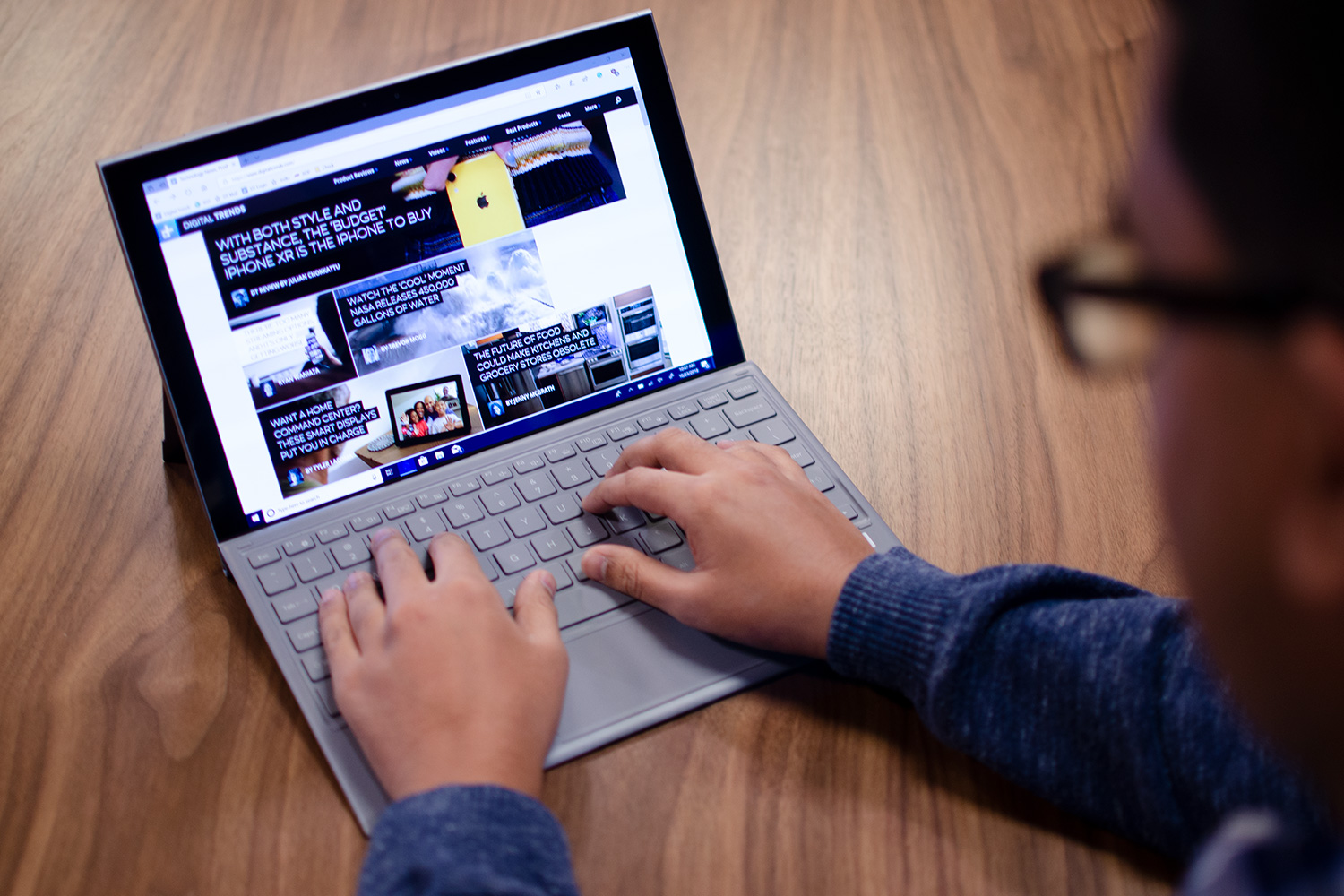
Once was a time when Microsoft had fallen behind when it came to portable computing. Today though, modern manufactures release products specifically designed to compete with the excellent range of Microsoft Surface 2-in-1s. That’s exactly what Google and Samsung have done with their new respective Pixel Slate and Galaxy Book 2 convertible tablets.
They’re distinctly different devices though, sporting different internal hardware configurations and very different operating systems. So, which is best? To find out, we pitted the Samsung Galaxy Book 2 versus the Pixel Slate and made them face off in a number of important use cases.
Design
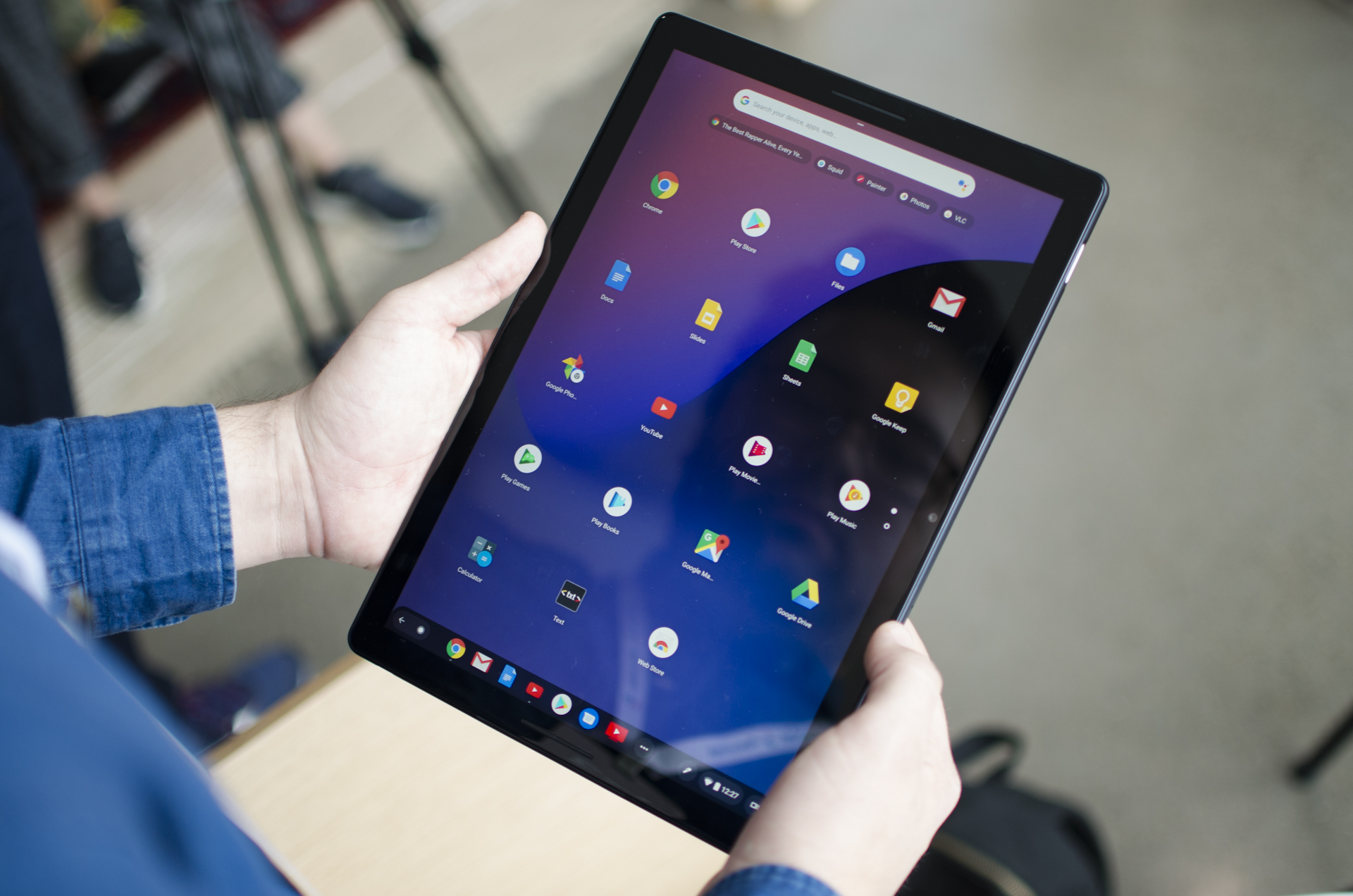
Google is well known for its minimalist aesthetic choices, and the Pixel Slate fully embodies that ideal, but in a fashion that we found a bit drab. It’s flat, dull color scheme and heavily rounded corners make it look less exciting compared to its contemporaries. The Galaxy Book 2, on the other hand, really stands out. It has a subtle, soft aluminum finish that is truly striking, even when compared to fresh-faced devices like the Surface Pro 6.
Both suffer from overly thick bezels, which is becoming a hallmark of 2-in-1 devices. Perhaps we’ve been spoiled by the ultra-thin bezels of modern laptops like the XPS 13, but we can’t help with wish these 2-in-1s adopted at least some kind of middle ground for a more up-to-date look.
Style aside, both devices are light and well balanced. During our time with the Pixel Slate, we even saw someone balance it on a single fingertip, showing how easy and comfortable it is to hold in just one hand.
Port selection on the Pixel Slate is as minimal as its aesthetic, offering just two USB-C connectors and an accessory connector for the keyboard (and no headphone jack). The Galaxy Book 2 has a slightly broader array of connection options, offering the same USB-C ports, a microSD card reader, and a 3.5mm headphone jack. It also has built-in LTE for easy internet connectivity on the go — something that is becoming more common in laptops too.
Although there is a stark disparity between the starting price of both devices, the bundled accessories (or lack thereof) close that gap significantly. The Galaxy Book 2 starts at $1,000 but comes complete with a detachable keyboard and a new S Pen, the latter of which magnetically attaches to the lid. The Pixel Slate might start at just $600, but both the keyboard and Pen are additional accessories, priced at $200 and $100 a piece. The keyboard takes some getting used to as well, with our early testing leaving us far from enamored with the rounded keycaps.
Arguably the biggest difference between the two devices’ designs though, is the software they run. The Pixel Slate runs Google’s Chrome OS which is lightweight and increasingly offers better touch support. It has its own suite of compatible applications and a broader selection of Android apps. The Galaxy Book 2 runs Windows 10 S in its default configuration, which means it is limited to Microsoft Store apps. You can opt for a full Windows 10 installation instead, however, if you so wish.
Performance
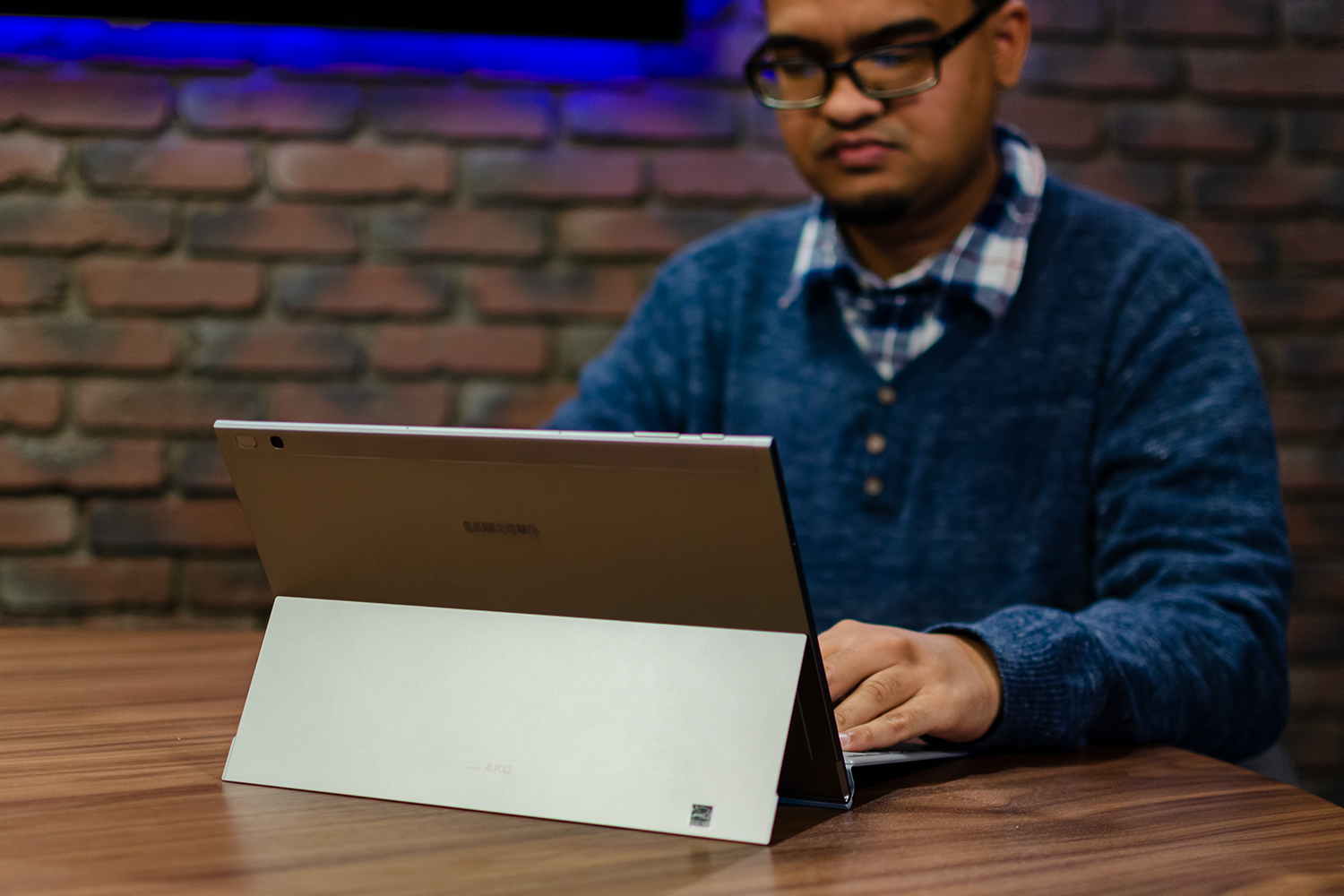
The Galaxy Book 2 is built around Qualcomm’s Snapdragon 850 octa-core processor and comes with 4GB of RAM and 128GB of onboard storage, all for $1,000. In our review, it performed well with no real slow-downs during light multitasking or multi-tab browser usage. It shows noticeable improvements over the older Snapdragon 835 processor but it still performs poorly when compared with Intel hardware like the Core i5 CPU found in the Surface Pro 6. The onboard Adreno 630 graphics core was lacking in gaming scenarios, proving to be only really capable of rendering low-demand titles like Minecraft at comfortable frame rates.
They should look pretty though, thanks to the bright and rich AMOLED display the Galaxy Book 2 sports. It has a resolution of 2,160 x 1,440, offering a pixel density of 216 pixels per inch (PPI).
The Pixel Slate comes in a few different configurations and uses more typical laptop hardware. The $600 model comes with an Intel Celeron processor, 4GB of RAM, and 32GB of onboard storage, with options to double both.
In our hands-on test, we used the $800 Intel Core m3 model with 8GB of RAM, which we found to be a little underpowered, feeling quite clunky during certain tasks like using the device’s new split-screen mode for multi-tab browsing at the same time. The $1,000 model should be far more capable though. It offers an Intel Core i5 CPU, 8GB of RAM and 128GB of storage. The $1,600 high-end variant sports an Intel Core i7 CPU from Intel’s Amber Lake generation, 16GB of RAM, and 256GB of storage space.
None of the Pixel Slate’s chips will have super-powered graphics cores, but they should be more than capable of handling the multitude of low-demand games and mobile titles that make up the bulk of the Chrome OS catalog. They’ll look crisp too, thanks to the Pixel Slate’s 3,000 x 2,000 (293 PPI) display, though odd scaling on Android apps might mean black bars are a requirement to fit the screen.
Portability
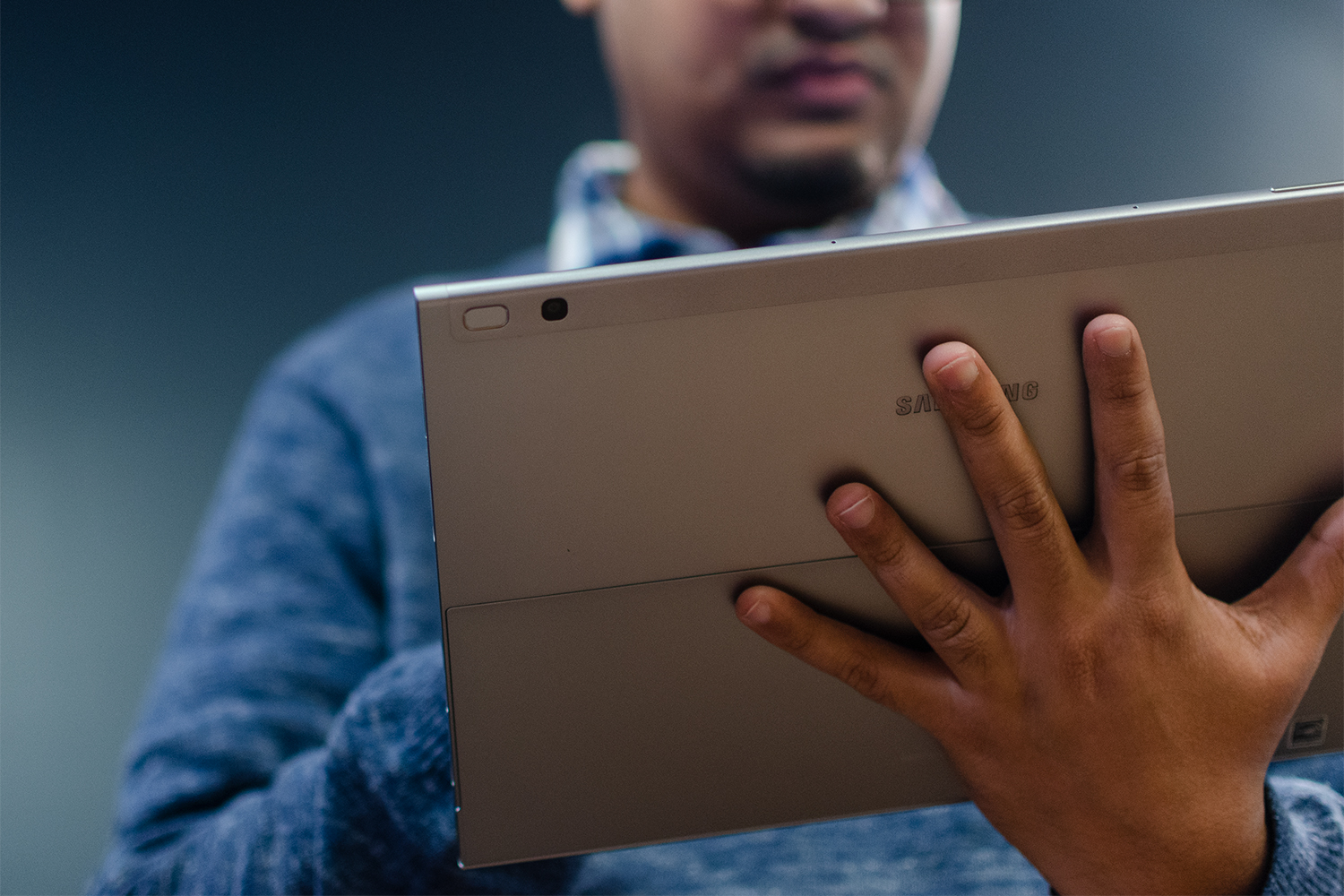
The dimensions of both devices are much the same. The Galaxy Book 2 measures 11.32 x 7.89 x 0.30-inches, while the Pixel Slate measures 11.45 x 7.95 x 0.27-inches. The weight difference between the two is also negligible — 1.75 pounds and 1.6 pounds respectively. While both are small and light enough to throw in a bag for travel, the Pixel Slate has arguably better weight balancing, making it the more comfortable device to hold one-handed.
There is a starker difference in battery life, however. The Galaxy Book 2 is rated by Samsung at lasting as long as 20 hours on a single charge, while the Pixel Slate is rated for up to 10-hours of mixed usage. In our testing of the Samsung 2-in-1 managed seven and a half hours of web-browsing which isn’t bad, but it’s a little underwhelming considering the Qualcomm processor was supposed to enable far greater battery life than the Intel competition.
We have yet to run detailed battery tests on the Pixel Slate.
Pixel Slate pulls ahead by a pixel
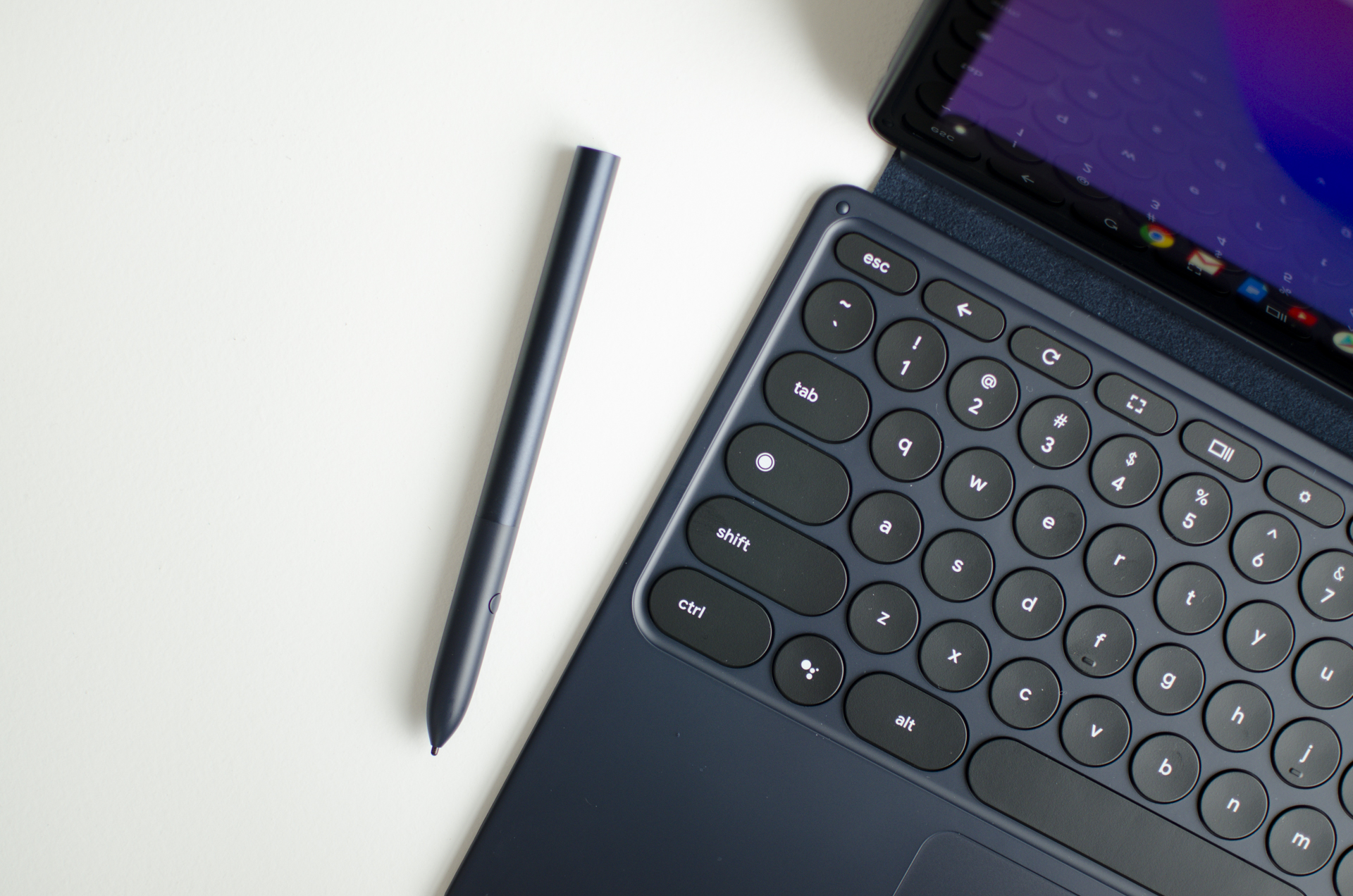
Neither the Pixel Slate or Galaxy Book 2 have really blown us away. We’d recommend a Surface Pro 6 over either of them, but in this head-to-head there are only two combatants and we have to raise the flag of the Pixel Slate in victory. It might be dull to look at, have expensive accessories, and wonky performance at the low-end, but its overall package is more pleasing, especially at its lower price point.
The Galaxy Book 2 does have better battery life and a much nicer aesthetic, but it’s hardly affordable. The Snapdragon 850 feels underwhelming at times and the Windows 10 S operating system left us frustrated more than liberated, as was the intention with the leaner version of Microsoft’s flagship operating system.
There are certainly better 2-in-1s out there, but if you’re picking one of these, the Pixel Slate offers enough of a display upgrade and a more affordable array of hardware that it wins the day. This may change once we complete a full review of the Pixel Slate, but so far, it offers the better overall 2-in-1 experience.
Overall winner: Pixel Slate
Don’t forget to check out our laptop reviews for some other great 2-in-1 options.
Editors' Recommendations
- Dell XPS vs. Dell Latitude: here’s how to decide
- The best 2-in-1 gaming laptops for 2024
- Surface Laptop Go 3 vs. Surface Pro 7+: is it an upgrade?
- All of Samsung’s videos from today’s Galaxy Unpacked event
- The Galaxy Book 3 Ultra is Samsung’s most powerful laptop ever



